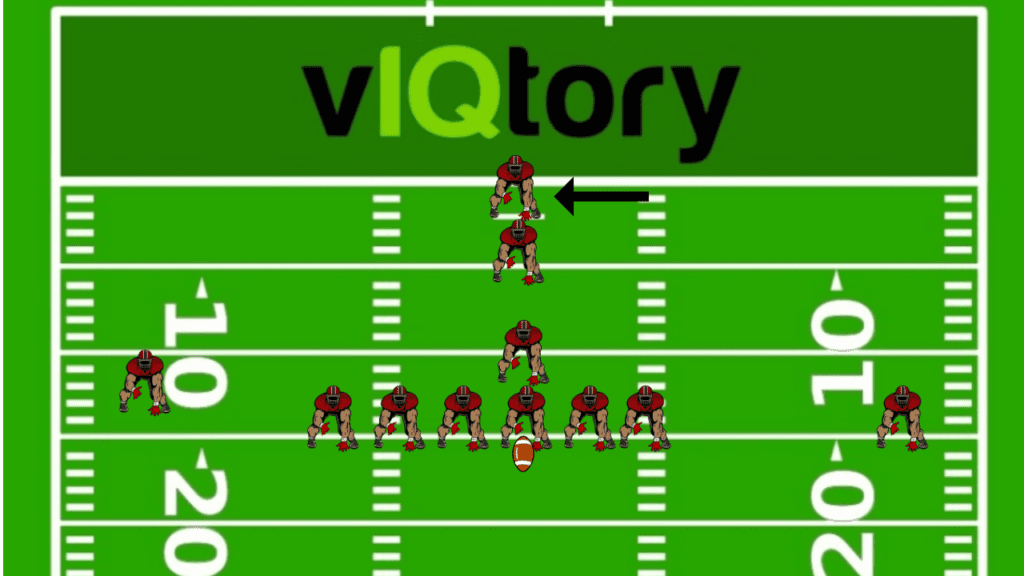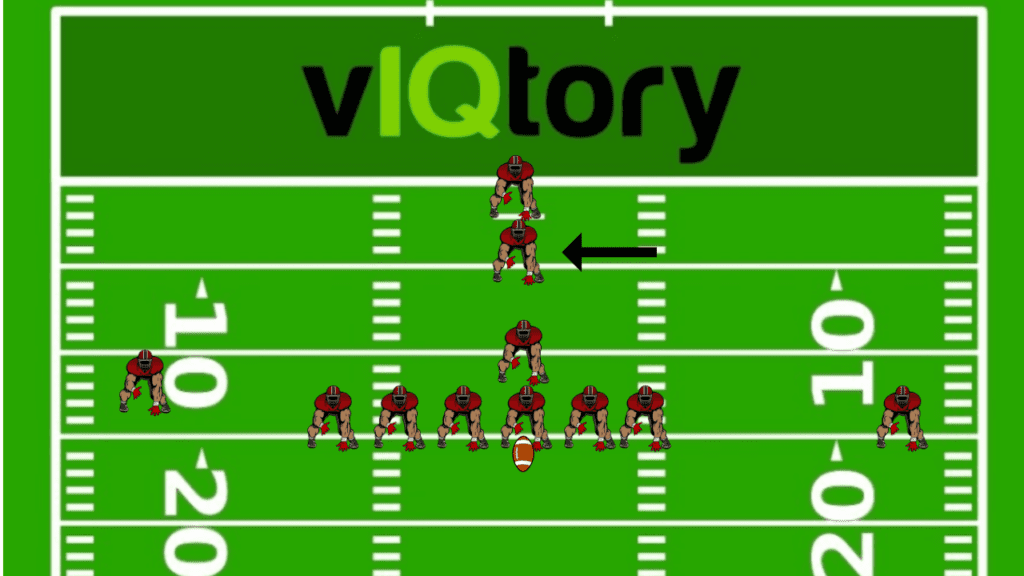Running backs are a key part of a football team. They must possess a unique combination of speed, agility, vision, and toughness that allows them to excel at rushing the ball, catching passes, and blocking.
Size isn’t often a factor with running backs, as they can be tall or short. However, they must have the same quality of speed, power, and toughness to be effective.
Legendary NFL running backs like Walter Payton, Emmitt Smith, and Barry Sanders demonstrated relentless skill and determination that made them exceptional players at their positions.
The running back is one small piece on the football field, but a great running back can make a major impact.
After you learn about running backs, be sure to check out this article on all the positions on the field.
Running Back In Football
The running back is the focal point of the offensive backfield. Their main role is to carry and run with the football to try to score a touchdown.
However, great running backs are also threats, catching passes and blocking on behalf of the quarterback and other players.
Their versatility, reliability, and work ethic make them indispensable.
Let’s learn more about the primary roles of a running back.
Running with the Ball
Running backs strive to advance the ball by evading defenders. By spotting gaps and cutting across the field, they can gain extra yards after contact. Running plays drive the offense, but running backs also contribute through deception, like faking runs while setting up passes.
Catching Passes
Running backs must catch passes from the quarterback using proper technique.
After securing the ball, they quickly read blocks and defenders to try to gain as much yardage as possible. Using their blockers effectively can help maximize these yards.
Blocking for Teammates
Running backs protect the quarterback and open space by blocking defenders. Shoulder blocks and aggression are key.
Staying close to lead blockers allows them to contribute most effectively here. Skilled pass-blocking running backs like Ezekiel Elliott help power their team’s whole offense.
Increase Your Football IQ
Why spend hours on Google and YouTube trying to learn football yourself? We’ve created a simple guide to help make you the smartest person in the room.
Types of Running Backs
Halfbacks, tailbacks, and fullbacks have distinct roles that serve the running game. Halfbacks are nimble and often handle rushing plays. Tailbacks can both run and catch. Fullbacks mainly block and protect other backs. Together they allow offenses to operate smoothly.
Halfbacks
Halfbacks align close behind the quarterback and tend to control rushing plays. Tailbacks are often identified in split back formations, lining up next to another running back in the backfield.
Here is an example of a halfback.
Tailbacks
Tailbacks line up behind the quarterback in a T-shape. They can run, catch passes out of the backfield, and quickly change direction, accelerating through holes.
Tailbacks can often be found lining up directly behind the fullback in the I formation.
Greats like Jim Brown and LaDainian Tomlinson made the most of the tailback’s versatile role.
Here is how you can identify a tailback in football.

Fullbacks
Fullbacks are larger backs focused on blocking for the primary halfback. These players used to be relevant in the 90s, but the position has since died out due to teams spreading the football out more.
Fullbacks like Mike Alstott used both size and skill to open holes for their tailbacks.
Here is where the fullback lines up on offense.

Essential Skills for Running Backs
Key running back capabilities like speed, agility, vision, and resilience make them challenging for defenses. Honing these lets them shine amidst high-level competition.
Here is a video that can help you learn what running backs in football and why they are so important.
Speed and Agility
Essential movements like dodging tacklers require running backs to have tremendous speed and agility developed through drills and training routines. Resistance training also builds explosiveness off the line.
Vision
By quickly recognizing holes and opportunities, even as plays develop, running backs can systematically advance the ball while avoiding big losses. Sharp vision turns uncertainty into reliable gains.
Toughness
The intense physicality of the position demands running backs display mental and physical durability. Power exercises and emotional discipline help them perform consistently through any adversity.
Developing as a Running Back
Becoming an elite running back requires comprehensive strength and conditioning programs catered to the position’s specialized demands.
Strength Training
Incorporating squats, deadlifts, and other targeted lifts builds the power running backs require while increasing balance and stability for multi-directional movement.
Endurance Building
Boosting cardiovascular health through long runs, intervals, and plyometrics directly translates to sustaining top speed and agility late into games without fading.
Technique and Drills
Mastering the nuances of receiving handoffs, blocking angles, and route running separates decent runners from truly great ones. Specialized drills ingrain muscle memory.
These are the best ways to play running back.
Legendary NFL Running Backs
The records and resilience displayed by Walter Payton, Emmitt Smith, and Barry Sanders during their standout careers personified excellence at the running back position.
Walter Payton
Walter Payton‘s versatility and extreme durability made him an icon. His ability to shoulder such a relentless workload allowed him to set imposing career rushing marks.
Emmitt Smith
Emmitt Smith‘s unprecedented mileage and production cemented his status as the NFL’s premier rusher. Staying healthy for so many years demonstrates tremendous physical and mental endurance.
Barry Sanders
Barry Sanders‘ unparalleled creativity and explosiveness made him appointment viewing. His thrilling style forever changed perceptions about dominant running styles.
Summary
Running backs require diverse physical talents tailor-made for spearheading offenses. Legends like Payton, Sanders, and Smith modeled perseverance through punishment while expanding notions about backfield brilliance.
If you liked learning about running backs, we recommend you check out our Beginners Guide To Football below.
If you’re interested in learning how to play running back, be sure to check out this article.
Learn more about the running back position and other positions with these articles:
Difference Between A Running Back & Receiver
Quarterback Position Explained





